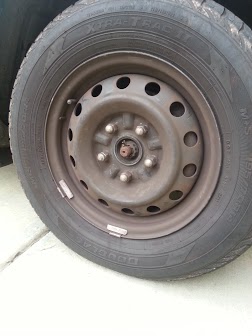This was originally published in 2012 as a series of separate blog posts. For the sake of simplification, we have consolidated these blog posts onto this one page that you’re reading. Unless otherwise noted, the information has not been updated, so all numbers and information reflect 2012.
I’m changing careers. Well, sort of.
About two years ago I became a full-time freelance writer. At the time, I thought life couldn’t get any better: I make my own hours, I never sit in traffic, I award myself exorbitant vacation time, and I spend almost every day in my pajamas.
But I’m troubled by one little fact: I’m trading my time for money.
I may “work from home,” but I’m still a glorified employee.
In fact, I might even say that I’ve been selfish. I’ve created a job for myself, but I haven’t created jobs for other people.
I work alone, rather than with a team of talented people. My impact is limited by my time and skill, instead of being multiplied by the talent of my team.
“Great things in business are never done by one person; they are done by a team of people.” – Steve Jobs
So here’s my career goal for 2012: I want to stop being “self-employed” and start being an “employer.”
The old stereotype says that immigrants (like me) come to America to steal jobs. Well, I’m going to turn that around: I want to CREATE jobs.
I’m Investing 100 Percent of My Income
How can I afford this? (I can afford anything!)
I’ll continue my current freelance writing work. I’ll earn a little money from that.
Since I believe in being frugal with my time, rather than my money, I’m investing every penny I earn in 2012 into my website and real estate ventures.
That’s right: I’m investing 100 percent of my 2012 income.
Will and I have agreed that we’ll live on his (modest) salary and invest all of my income. It’s our ultimate “couple money” strategy – live on one income and invest the other.
If you’re misled into assuming Will earns a big salary – I assure you, he does not. He’s a 32-year-old who lives with roommates. One of our roommates – a middle-school teacher – earns more than he does.
Will also doesn’t receive any benefits – no 401k, no health insurance.
It’s a stretch to support two people on his income. But it’s important to us to invest every penny into building assets.
I’m splitting our investments three ways:
- I’ll invest the first $10,000 into our Roth IRAs ($5,000 per person).
- I’ll use the rest to hire people on Elance who can help with behind-the-scenes website tasks. This will support both Afford Anything and several smaller websites I’m developing.
- I’ll buy and repair more rental homes in Atlanta.
Why Am I Doing This?
The best path to wealth is through owning the means of production. That’s Economics 101.
There are four ways to own the means of production:
- You can own stocks, which create income by dividends and capital gains.
- You can own houses, which create income though rental payments.
- You can give out loans, which create income through the interest you receive.
- You can own businesses, which create income by selling a product or service.
Stocks and real estate are “slow growers” of wealth. They’re good for the long run.
Owning a business provides you with the best chance to rapidly grow your wealth. But my business is also slow-growing. It’s limited by one major bottleneck: me.
To grow my small business, I need time and money. My time is limited, but I can amplify it by converting my money into more time.
What’s the Worst-Case Scenario?
Before I make just about any decision, I ask myself: what’s the worst that can happen?
In this case, the worst that can happen is that I “lose” every penny I earn next year. My return-on-investment will be zero.
But I won’t be in any debt.
In other words, the worst-case scenario is that I live more frugally than I need to.
Given the potential upside, that’s not so bad.

January 2012 Update
As you’ll recall, my pledge was to max out my Roth IRA, and split the rest between buying rental properties and growing my website ventures.
My report? Ninety percent of my January income went into my Roth IRA. Ten percent went to business-related expenses that I couldn’t postpone, such as renewing the hosting package that allows you to read this website.
Wow. That was the simplest expense report ever.
Which leads me to an observation: Saving money is easier when you “snowball” it.
The “snowball method” is a phrase popularized by finance guru Dave Ramsey, in reference to paying off debt. Dave Ramsey argues that you should throw all your spare cash at your smallest debt, regardless of its interest rate. You’ll feel a psychological victory when you cross that debt off your list, he says. That victory will motivate you to cross another debt off your list, followed by another one.
His method is controversial. Some people love it, others don’t.
I don’t have any personal experience to tell you whether or not it works for repaying debt. But in my experience, the snowball method is a great savings motivator.
Take the Roth IRA, for example. Eligible participants under age 50 can contribute $5,000 per year, which translates to $416 per month.
But $416 per month is just so darn unfulfilling. Each month, you take a big chunk out of your budget – but by April, you still have less than $2,000 saved.
Yawn. Pardon me, but that bores me a little.
Throwing every spare penny into the Roth IRA is a bigger motivator. In a few weeks, I’ll be able to cross it off my list completely. Then I’ll move on to the next goal.
(Side note: It’s a good idea to invest in the stock market slowly, instead of investing a big chunk of money at once. So I keep my Roth IRA in cash, and “pace myself” with a monthly stock fund purchase.)
Should We Snowball All Our Savings?
I’ve been toying with the idea of taking this approach with the way we save Will’s money, as well.
The pledge is to INVEST all of my money, which means we have to SAVE Will’s income for:
- Car repairs
- Replacing his 15-year-old car and my 14-year-old car whenever they stop running
- Health care, since neither of us have employer-provided health insurance
- Travel, since we’re both travel addicts
- Annual expenses like contact lenses and veterinary bills
Right now, we throw money into a general savings fund that we tap whenever an expense comes up. It’s worked so far. But it feels unsatisfying, since it’s hard to measure if we have “enough” saved.
So I’m toying with the idea of opening many savings accounts, each one directed towards a specific savings goal.
Normally, people contribute a small amount per month for each goal: $50 towards the car repair fund, $20 towards the contact lens fund, and so on.
But I think we’ll save money with the snowball method: Max out the contact lens fund. Then max out this year’s travel fund. Then tackle the monster goal: replacing our cars.
(Obviously, if my car goes kaput! before we’ve saved enough to replace it, I’ll redirect our travel money towards buying a replacement. The broader purpose is to enjoy many psychological “wins” of crossing goals off our list. Those “wins” should motivate us to save more.)
The Bottom Line
Throwing almost all my January income into my Roth IRA was easy. I didn’t need to do any fancy accounting or budgeting. I just paid a few business-related bills, and I poured everything else into the Roth.
Its simple, “lazy” investing — my favorite kind. 🙂

February 2012 Update
Cash vs. Accrual
First, some background: When you work for yourself, your “income” isn’t as simple as seeing what’s in your paycheck. There are two ways to figure out how much you make:
#1: You can measure how much your customers/clients owe you, even if you haven’t received the money yet.
– or –
#2: You can measure how much cash got deposited into your bank account, regardless of how many I.O.U.’s are floating around.
The first method is called the “accrual” basis, since it measures how much money you’ve accrued, or earned. The second method is called the “cash” basis, since it measures the amount you’ve received. (A friend of mine refers to this as “A.F.C.” – actual friggin’ cash.)
I track both, but for obvious reasons, I can only invest money that I’ve received. I can’t invest money my clients owe me.
How Did I Do In February?
In January I threw almost every penny into my Roth IRA. In February, on an “accrual” basis, I earned more than enough to max out the rest of my Roth IRA, plus a few thousand extra that I can invest in my two businesses: buying/fixing rental houses and building/running websites.
However, on a “cash” basis – the money that’s reached my bank account – I’m $500 shy of maxing out my Roth IRA. Grrr!
It’s frustrating to be this close to crossing “Roth IRA” off the list. On the upside, I’ll certainly finish funding my Roth by the time I write my next monthly report.
Admittedly, I would be finished funding the Roth already if it weren’t for the fact that I spent 18 percent of last month’s income on business-related expenses.
Some of these were costs that I couldn’t postpone: I needed to renew my membership in the Society of Professional Journalists, for example. I sit on one of their national committees, so having a lapsed membership would be embarrassing.
But other expenses were expansions of my business that I chose not to postpone. I’m eager to gain momentum and I don’t want to wait around for another month.
Seeing how my business affects my income probably contributes to that impatience. Until November 2011, the vast majority of my income – more than 90 percent – came from freelance writing.
In December, things shifted. Two-thirds of my income came from freelance journalism. The other one-third of my income came from my websites. That same pattern held true in both January and February.
What’s Next?
In March I’m looking forward to putting the last $500 in my Roth IRA and directing the rest into fueling my two businesses. I’m hungry for more real estate, and I need to develop a plan that guides how I can make the most of these bargain-basement housing prices. I think (hope?) that March will be an exciting month. Stay tuned!

March 2012 Update
In January and February, I dumped every cent I earned into my Roth IRA and came really freakin’ close to maxing out my $5,000 contribution limit.
My plan for the month of March was to finish maxing out my 2012 Roth IRA contribution. I’d “snowball” this savings goal, cross it off the list, and move on to the next item at hand.
But something unexpected happened: I bought a second rental home. I hadn’t planned on buying another house at that moment, but I spotted a deal that was too good to refuse. Will and I had been saving to eventually buy a second home, so we were prepared to pounce on it.
The house needs a ton of repairs. So every cent (and more) that I earned last month went into fixing up the place.
Here’s the breakdown:
- Garage door – $576.73, including installation plus removal/disposal of old door
- Carpet – $1240, including installation plus removal/disposal of old carpet
Labor Only:
- Tearing down and rebuilding a 10×12 deck – $375
- Painting the house interior – $900
- Laying vinyl flooring in kitchen/bath – $200
- Repairing laundry valves – $200
- Patching drywall holes and painting garage – $200
- Installing countertops in kitchen and bath – $150
- Patching drywall throughout house – $100
- Removing and re-hanging interior doors – $100
- Sanding and painting kitchen cabinets and bath vanities – $250
- Replace fascia and rotted roof decking – $370
Total: $4,661.73, mostly for labor. The only material included in this figure is the carpet and the new garage door.
In addition, we also bought materials such as paint, primer, caulk, drywall compound, vinyl flooring, decking, cement, roof shingles, screws, nails, and LOTS of wood. I haven’t processed the exact figures – you should see how thick my stack of receipts is! — but I believe this figure comes to roughly $2,000 – $3,000. I’ll post a more precise update once I spend a few hours inputting everything into a giant spreadsheet.
There are still more repairs needed: I need to replace the gutters and water heater, tune up the HVAC, take a few huge loads to the dump (or rent a dumpster), paint the fascia and termite-proof the house.
In short: I need to pour every cent into this house to get it rent-ready. Everything else is on hold.
Why Not Do It Yourself?
Our first rental building – the triplex in terrible condition – taught me that doing-it-yourself costs time. It’s dollar-cheap but time-expensive.
Here’s where we get into a quandary: on one hand, I believe in being frugal with time, not money. On the other hand, it’s tough to part with hard-earned cash.
Our happy medium solution is to do the most expensive things ourselves, like electrical work and plumbing, and to outsource the most time-consuming tasks, like paint and drywall.
(Update 2013: Now we outsource everything, because our time is more valuable than it was in 2012. Our businesses have grown, and that demands delegation.)
As I’ve discovered, collecting quotes from contractors and comparison-shopping for materials like vinyl and carpet eats up about 10 hours per week. Driving to the house to check on the progress eats another 2-5 hours per week.
Of course, that doesn’t compare to the time-cost of doing the actual work ourselves, which could eat away 60 hours a week if we were serious about finishing it quickly so that it can go on the rental market.
Opportunity Cost
The good news is that we bought this house in cash, so I don’t have the stress of needing to make mortgage payments while we repair the house.
The bad news? Lack of a mortgage is a double-edged sword. Without that stress, I’m less motivated to work quickly. I find myself putting off calling contractors for “just one more day,” until those days add up to a week.
Logically, I know that every month this house isn’t rented is costing me hundreds in the form of “opportunity cost,” or lost income potential. But humans are hardwired to be more motivated by losing actual money (money we’ve gone through the trouble of earning) than theoretical money (opportunity cost).
Setting deadlines helps: my goal is to get this house rented by May 1. Creating a reward for myself also helps: as soon as this place is rented, I’m rewarding myself with a flight to Austin, Texas to visit one of my good friends. That gives me the motivation to continue managing this project.

April 2012 Update
#1: I Maxed Out My Roth IRA!
I’m done, finished, finito with my 2012 Roth IRA contributions. Hooray! As you’ll recall, I fell just a few hundred dollars shy of maxing out my Roth by the end of February, and in March my budget got gobbled up by needing to pay for repairs on the 3-bedroom rental house that we bought for $21,000. I’ve been wanting to cross the Roth line-item off the list for more than two months, and I’m jazzed that I’m finally done!
#2: I Paid a Hefty, Hefty Tax Bill
Ah, the joys of self-employment: I get to write the government four checks a year.
My taxes aren’t withheld from my paycheck (because I don’t get a paycheck). Four times a year, I file “estimated quarterly taxes,” which consists of guessing how much I’ll owe and then sending the government a check for one-quarter of that.
After crunching the numbers, I discovered that every ounce of money-making effort I exerted during the month of April goes straight to the government. Gee, I hope they’re investing it soundly. 🙂
Between taxes and capping off my Roth IRA, April’s income is spoken for.
Now Comes the Hard Part
Until now, this investing project has been simple. I make a hefty retirement contribution and continue working in the same manner in which I’ve always worked, without questioning the strategic growth or direction of my business.
This month, the hard part begins. If I’m serious about investing in my fledgling little businesses, then I need to carefully consider HOW my money is going to get spent. Should I concentrate on buying real estate or growing websites? Should I branch into podcasting and videos, or should I start upgrading my rental units? How will I have the time to grow these projects if I’m ALSO trading my time for money as a freelance writer?
I can’t just throw money at a business; I need to manage it carefully, making sure every penny is spent strategically. But that requires answering some tough questions.
This is an issue I didn’t have to deal with for the first four months of the year, when I was simply making retirement contributions and getting our rental house ready for move-in. I’ll face these questions head-on in May.
Perhaps this is an unexpected benefit, a blessing, of investing money in your business: it forces decision-making. It forces growth. It forces strategy.
In a strange way, perhaps investing forces you to hold yourself accountable. If I’m merely contributing my time, I might be tempted to sell myself short. But if I’m spending hard-earned money, I demand better results.
May 2012 Update
Now comes the hard part. It’s time to make strategic decisions about how to invest the rest of my income for the next 7 months of the year. Here are a few lessons I’ve gathered:
#1: Spending Money is a Full-Time Job
Spending money requires hundreds of hours. I have to brainstorm ideas. Research options. Gather quotes. Run spreadsheets. It makes me wonder: How does anyone have the time to earn AND spend?
This website’s maxim says you can afford anything, but not everything. If I want to grow this website, I can redesign the site OR hire assistants OR start podcasting.
Alternately, I can focus on real estate. I can save up to pay cash for another rental house OR hire a bookkeeper OR upgrade my triplex building.
Every dollar I spend on X is one less dollar I can spend on Y, so I need to compare the options. Emotion says, “I want it all!” Reality says, “Make a spreadsheet.”
#2: Avoid Too Many Irons in the Fire
Last week I reconnected with a friend from college whom I haven’t seen in years. I described my various projects: building websites, buying real estate, running a freelance business.
“Sounds like you have too many irons in the fire, none of them are getting hot fast enough, and you’re sweating,” she replied.
Wow. She hit the nail on the head.
Diversification is a central investing tenet for good reasons. It’s prudent, up to a degree.
But it also carries the risk that you’ll throw money at an investment you don’t understand. You can’t be an expert at everything.
That’s why I mostly avoid buying individual stocks: I don’t have time to read balance sheets and trade journals. I buy a few broad-market index funds and move on with my day.
The same thing needs to happen the rest of my investments. There are a zillion possible directions I could take. I can’t pursue them all. I need to narrow my options, make a decision, and roll with it.
So What Did I Do Last Month?
Last month, I did a lot of thinking, a lot of reading, and a lot of tinkering with spreadsheets. I spent time with several potential contractors in both the real estate and website world. I started a few negotiations.
And I didn’t spend a penny.
“You mean you’re just sitting on one month’s pay?”
Yep.
I know, I know: this doesn’t make for riveting reading. You’re probably yawning as we speak.
But I assure you, there’s a ton of activity in my little brain. Lots of thoughts being processed. Options considered. Numbers crunched.
Stay tuned.

October 2012 Update
In my early twenties, the only thing I wanted from life was a chance to travel the world. I was obsessed with this dream. I could taste it.
So – without articulating this philosophy – I shoveled every cent into a travel fund. I wasn’t attempting a personal finance tactic. I was simply aligning my money with my priorities. At that time, my top priority was to travel. It made sense that every spare dollar would be dedicated to that cause.
Now, 27 countries later, I’m satisfied with my globetrotting forays. I’m ready to focus on something else I’m passionate about: creating financial freedom.
It’s now the first week of November. Ten months down. Two to go.
We’ve maxed out my Roth IRA, we paid cash for a $17,021 renovation of one of our income-producing rental units, paid cash for a $10,000 renovation on another rental house, and I put some money into this website. And of course, I paid quarterly taxes. (I can’t ever seem to escape that expense.)
All our money went towards one goal (invest for financial freedom). We diversified our investments into index funds, real estate and a micro-business. But the goal is unified.
So what’s next on the agenda?
With only two months left to go in 2012, I realize Will hasn’t contributed a dime to his own Roth IRA. Oops.
The deadline to make IRA contributions isn’t until Tax Day, 2013. But I’d rather just get it over with.
Yesterday I dumped $1,700 into Will’s Roth IRA. Once I shift some money around, I’ll max out the rest ($5,000 total) within the next two weeks.
Done. Finished. Finito. See how cognitively simple that was? My limited mental bandwidth can check this item off the list.
After that, my checking balance will hover near zero (which is fine, because we’re living on Will’s income). I’ll need to figure out how to invest any income I receive during the final two months of the year.
Regardless of what I do, I’m investing all of it. That meta-goal is set: I want financial freedom.
So I live frugally. Invest. Repeat until I attain freedom. Or at least until New Year’s Eve. 🙂

November 2012 Update
I’m relieved that this will be over. I’m burned out on shoveling my money into investments. I miss traveling and other fun uses of my savings.
Long-time AA readers remember how much I traveled in 2011: four weeks in New York, two weeks in the Caribbean, and trips to California, Colorado, Florida and other favorite spots. I spent half of 2010 in Australia, with a two-week stop in South America. I devoted 2009 and 2008 to touring 17 countries across Asia, Europe and the Middle East.
You’ve also noticed how little I’ve traveled in 2012. My money has entirely gone into rental properties. Once the clock strikes midnight on New Year’s 2013, I can start exploring the world again. Whew!
(Ah, who am I kidding? Rental property is addictive. I’ll still be spending my money accumulating more … )
Despite this burnout, I’m proud of the steps we’ve taken towards financial freedom. We both maxed out our Roth IRA’s. We paid $30,000 cash to repair two rental units. I sprinkled a few grand into Afford Anything. I paid quarterly taxes, like the good naturalized citizen that I am. And I’m sitting on two months of cash.
We Didn’t Do Anything Remarkable. It Was Ordinary.
We’ve also proven to ourselves – and hopefully to the readers who follow us — that we can live on one person’s income while investing the other.
It’s more common than you might think. Plenty of couples live on one income. The median U.S. household has 1.3 income-earners, according to the Census Bureau. In other words, there are more single-income than dual-income households.
Furthermore, the median U.S. household supports 2.5 people with that 1.3-person income. Two people living on one income is normal in the U.S.
The only abnormality is that I’m also earning money, I’m just investing 100 percent of it after taxes. If you “pretend” I’m not earning a dime, we’re about on-par with the median American.
Actually, most of our financial details are pretty middle-of-the-road. We live in Atlanta, which has a mid-range cost-of-living. It’s not as cheap as Fort Smith, Arkansas, but it’s not as pricey as Los Altos, California.
We both have bachelor’s degrees from state universities. We both work in ‘normal’ industries, software (him) and editing/writing (me). I’m an immigrant; he can trace his grandparents back to Idaho. I’m self-employed; he has a 9-to-5. Yep, we’re normal Americans. Nothing spectacular.
Frankly, it’s also not hard for us to invest a full person’s income. We live frugally. We drive old cars. We wear bargain clothes. We shaved $13,200 a year off our mortgage payments by renting out the two upstairs bedrooms.
(“Aren’t you too old to live with roommates?,” people ask. Their next question will be, “Aren’t you too young to retire?”)
But we didn’t go crazy with frugal measures. We don’t clip coupons. We eat at nice restaurants. I bought an iPad and I’ve fallen in love with Starbucks.
What’s Next?
But wait – there are still two more months’ worth of income to invest. I’m sitting on most of November’s and all of December’s pay.
I’ve decided to save it towards … drumroll, please! … my quest to buy (another) rental property. Here’s to House #4!
What’s that? You already guessed that’s what I’d do? Oh, you know me so well!
UPDATE 2013: We bought House #4!! Check it out!!

End-of-the-Year Recap
One year ago, I announced that I’d invest every dime I earned in 2012. Will and I would live on his income while investing mine.
The naysayers claimed we couldn’t do it. They were wrong!
It’s now January 2013, and we can announce “Mission Accomplished.” Here are the lessons from a year of not spending a cent:
#1: It’s All in Your Head.
Money management is 90 percent mindset and only 10 percent logistics. When you’re in the mindset that you make gobs of money, it’s easy to spend.
This pledge hooked us into the mindset that we’re a one-income couple. We stopped thinking about my income. Shifting to that mindset was the bulk of the battle.
#2: This is Great for Lazy People
I’m lazy. I hate budgeting. I’d rather sit on the couch eating Cheetos while staring into space.
The best way to avoid bill-planning? Amass a big ‘ol cash cushion. It’s friggin’ great for lazy people who have zero desire to balance their checkbook or scrutinize their statements.
#3: “You’re Rich!”
The whiners crawled out of the woodwork after I announced this project. One of my favorite comments came from a guy calling himself Tom, who claimed ordinary people aren’t “rich enough” to do this.
Oh Tom, you have so much to learn. Let’s look at the lifestyles of the rich and fabulous, shall we?
This year, Will and I:
- Wore the same clothes again and again … and again.
- Lived with two roommates.
“Isn’t Will, like, 33 years old? And aren’t you 29?”
“Yeah.”
“Isn’t that kinda old to still have roommates?”
“Depends on what you want from life.”
- Drove beater cars.

See this cosmetic damage to my bumper? It’s been there forever. I’m not fixing it because, frankly, I don’t care.

One day when I’m ultra-rich, I’ll get hubcaps. I think they’re, what, $20?
- Lived without a bathroom or kitchen, in the middle of a massive construction project.
“Wait a sec, you’re still living there?”
“Yep.”
“With no shower?”
“There’s a shower at the YMCA. “
“Seriously?”
“Yep! The YMCA even offers free towel service. Score!”
“And no kitchen?”
“I can go to my parents house when I’m feeling desperate.”
“Why don’t you just rent a place temporarily, while your house is under construction?”
“Because we’re investing roughly half of our income.“
“Only rich people can invest that much money!”
“Uh-huh. Right.”
The whiners can go home. In another 10 years, when we’re actually rich, they’ll pretend that we were born that way. (Cue Lady Gaga song). Then they’ll sit in front of their flat-screen TV, sulking about the fact that they’ve made so little progress.
#4: But It’s No Sacrifice
None of these things I’ve named are a real sacrifice.
So my car has some cosmetic damage. So what?
So my clothes are old. Who cares?
Is that a sacrifice? Really? More than a billion people on the planet don’t have enough food. I’m not going to whine about a dinged car.
We still joined our friends when they invited us out to eat. We took a camping trip out West for a week. I even developed a Starbucks habit.
Where Did The Money Go?
“So, Paula, you mentioned investing. Where did the money go?”
$10,000 went into our respective Roth IRA accounts. Taxes gobbled a larger-than-I-like sum. A few thousand went into this website. The rest went to real estate.
Dude, real estate drinks your money. It’s scary how small of a dent a full year’s income makes.
We paid in cash for many repairs and renovations – like the $17,021 that we spent upgrading one of our rental units. It now rents for an extra $3,600 each year, which means it’ll pay for itself in less than 5 years.
We also paid cash for a $10,000 upgrade to the house that’s giving us a 17 percent return-on-investment. Woohoo!
We’re using a combination of cash and loans to pay for the renovations to our crowning rental unit, a 3-bed, 2-bath within our triplex. It’s pretty ugly right now.
That’s a wrap on the 2012: investing 100 percent of my income challenge. Thanks for coming along the journey!
